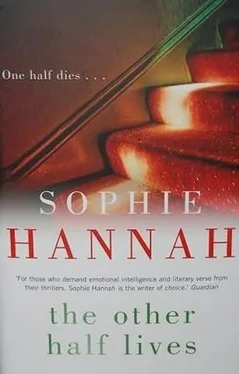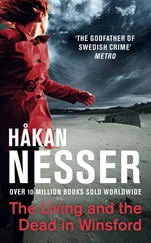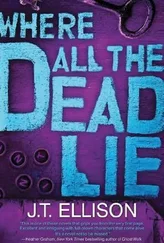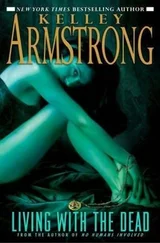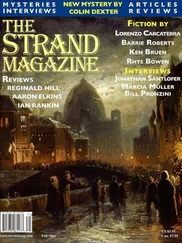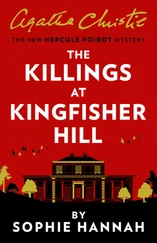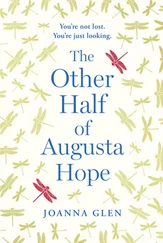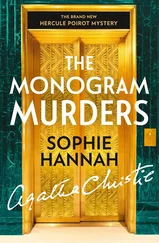Charlie switched her phone off. On the same side? Funny, that was never the impression Milward gave. She’d said nothing about having dispatched anyone to Villiers. Despite what Claire Draisey had told her, Charlie had no way of knowing if anyone from the Met was on their way to the school. She decided to stick with her original plan and head for Garstead Cottage, even if it meant losing her job. Ruth Bussey and Mary Trelease were there-hadn’t Draisey said so?
She turned on Kate’s car stereo and heard what sounded like a live gig-raucous applause and cheering, electronic music almost drowned out by hands and voices. When the clapping died down, a man started to speak. He didn’t say who he was, but Charlie guessed he was Kate’s sons’ headmaster, or one of their teachers. This was a school concert on CD. He was thanking something called the Wednesday Club Ensemble for its synthesised rendition of ‘Ten Green Bottles’.
Hearing the title jolted something at the back of Charlie’s brain. She breathed in sharply and turned off the stereo. Six Green Bottles -that was the name of a painting in Aidan’s TiqTaq exhibition. Surely… no. If it was true, it would be crazy. She forgot to steer, and drifted halfway into the next lane as, suddenly, several other things clicked in her mind, then swerved to get herself back on track, ignoring irate beeps from other drivers. It was crazy, no doubt about that, but she was right. She had to be.
She’d seen several unframed paintings on the walls at Mary’s house. One was of a man, woman and boy sitting round a table covered with empty wine bottles. Green bottles. Charlie hadn’t counted, but she was willing to bet there were six of them. She’d also seen a picture of a woman looking in a mirror, the same woman from the bottles picture. And from the photographs in Kerry Gatti’s file. That’s why Charlie had recognised the face-she’d seen it before, on Mary’s walls. The first Mary Trelease, the one who died in 1982. A woman looking in a mirror … Another of the titles Charlie had seen on Aidan’s TiqTaq sales list was Who’s the Fairest? Mirror, mirror, on the wall, who’s the fairest of them all?
And the picture Ruth Bussey had described to her that had been in one of the downstairs rooms at 15 Megson Crescent, of a boy writing ‘Joy Division’ on a wall-that had to be Routine Bites Hard , another of Aidan’s titles. The first line of Joy Divison’s best known song, ‘Love Will Tear Us Apart’, a song Charlie had heard thousands of times, contained those words, that phrase. She sang it under her breath, trying to assemble the bizarre chain of events in her mind.
In 1982, Len Smith had killed his partner, Mary Trelease, according to the official version of events. In 2000, Aidan’s first exhibition at TiqTaq had been a huge success, after which, unusually, he’d decided to give up painting. Charlie thought of the photograph Jan Garner had shown her of his Supply and Demand , the picture that had been reproduced in the exhibition catalogue: a woman at the top of the stairs, looking down at a boy. Charlie hadn’t focused on their faces, but she knew they were the same woman and boy she’d seen in the unframed pictures on Mary’s walls: the first Mary Trelease and… it had to be the young Aidan. And the older man-Aidan’s stepfather, Len Smith? Smith had two other stepchildren, Aidan’s brother and sister-could it be them in the painting Charlie had seen upstairs at Megson Crescent, the fat, dark pair with eyebrows that dominated their faces? Yes-had to be. Thinking about it, there was a resemblance between them and Aidan.
Mary had copied the pictures from Aidan’s exhibition. No, they’re not mine. That’s what she’d said. Then, only moments later, she’d admitted to painting them. Now Charlie understood. Mary had repainted Aidan’s pictures herself, the exact same scenes, though the paintings couldn’t have been more different from Aidan’s muted, painstakingly realistic ones. Charlie smacked the steering wheel in triumph as she realised she had the answer to another question: the copies, Mary’s versions of Aidan’s pictures, were unframed because they had to be. The people who framed for Mary-Saul Hansard and, later, Jan Garner-had seen Aidan’s exhibition; they’d have spotted what Mary was doing if she took her copies in to be framed, and she didn’t want them to know.
Why? Why paint someone else’s pictures?
Charlie lit a cigarette, her brain on overdrive. The nine buyers: Abberton, Blandford, Darville, Elstow, Goundry, Heathcote, Margerison, Rodwell and Winduss. Their addresses didn’t exist and neither did they. Ruth Margerison of Garstead Cottage didn’t exist. Garstead Cottage belonged to Villiers, Mary’s old school.
And Martha’s. Martha Wyers had also been a Villiers girl.
An unpleasant sensation, like the brush of cold fingers, crept up Charlie’s spine. What sort of person was she dealing with here? What sort of mind? Could it be that Mary had bought all the pictures from Aidan’s exhibition, using false names? Apart from the three paintings bought by Saul Hansard, Cecily Wyers and Kerry Gatti, and Charlie knew that at least two of those had been sold on to Maurice Blandford shortly afterwards.
The story, when Charlie told it to herself, seemed too outlandish to be possible. Mary Trelease was killed at 15 Megson Crescent in 1982. In 2008, another woman, also called Mary Trelease, lives in the very same house. That alone was chilling enough. Not everyone, thought Charlie, would be capable of first dreaming that up and then putting it into practice. Everybody enjoyed a good scary story; hardly anyone knew how to bring one to life.
And in between 1982 and 2008? How did the story bridge a gap of twenty-six years? A job interview, at which a woman falls in love with a man she doesn’t know. She writes a book about him. Later, she meets him again when they both have their photographs taken for a feature in The Times . It must seem to her as if fate has reunited them. A little later still, she attends the private view of his first art exhibition. She studies his work carefully, being obsessed with him. She sees a painting called The Murder of Mary Trelease . She thinks nothing of it, not until some time has elapsed, time during which her obsession has intensified. She hires a private detective who tells her the man’s father is in prison for killing a woman called Mary Trelease, and, of course, she remembers the picture. But the picture says something different about who committed the murder. Not in an obvious way-there’s no graphic depiction of violence-but subtly, so that the woman, our heroine, thinks she’s the only one who knows the truth.
Anyone who cared about stories would know that only the most important character gets to be in that position: knowing everything while everyone else knows nothing. That would be good for the ego, thought Charlie, though ultimately not good enough to restore an irretrievably contaminated specimen to health. This was a woman who, after a failed suicide attempt, painted herself dead, with a noose round her neck. As she wished she could be, or as she thought she deserved to look?
Charlie thought about Ruth Bussey and her self-esteem exercise, her failure to put up flattering photographs of herself alongside the pictures of Charlie, in spite of the book’s orders. For the past two years, Charlie had avoided looking at images of herself; she’d avoided being photographed as far as possible. How much more must you have to hate everything you are, were and might ever be to pour all your energy into painting yourself contorted and defeated by death?
Was that the story in her head? Charlie wondered. A woman who loathes herself, in spite of having all the money in the world to buy art, the services of private investigators, whatever she wants? In spite of her immense talent, and everything she could achieve if she looked forward instead of back? She can’t, though, that’s her tragedy. Her only story’s an old one, yet she’s terrified of it ending. That’s why she plays games, withholds the truth in a way that lets you know she’s keeping something from you, forcing you to play hide and seek with her. She has to make it last, because once the game’s over, there’s nothing left for her.
Читать дальше
